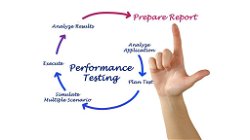Understanding Your Risk Tolerance in Investing: Factors to Consider
Vikash Jain
. 3 min read
Your level of comfort with taking on additional financial hardship is an essential consideration in formulating a strategy for increasing your wealth while minimizing your day-to-day anxiety about it. If you don't have the stomach to deal with the possibility of losing your initial investment, even for a short period of time, you'll have to settle for investments with lower risk and accept the lower returns that come along with those investments. With the availability of online chat services, you can seek guidance and support in making informed investment decisions, helping to alleviate some of the anxieties associated with financial risks.

How One's Tolerance for Risk is Determined?
When stock prices are going up, a high risk tolerance is something that anyone can have. Nevertheless, when the market is falling is the best time to accurately gauge the level of risk you are willing to take. Remember the month of March. The market tanked. The number of people without jobs skyrocketed. The world was forced to deal with an unprecedented level of uncertainty as people speculated about the potential impact of COVID-19 on the economy.
Understanding Risk Tolerance
Knowing the level of risk an investor is willing to take is helpful for investors when planning their entire portfolio and deciding how they will invest their money because every investment involves some degree of risk. Investors are categorized as either aggressive, moderate, or conservative according to the level of risk they are willing to take. Online risk tolerance assessments, which may take the form of risk-related surveys or questionnaires, are readily available.
Importance of Having a Suitable Level of Risk When Investing in Bonds
Generally speaking, there are two categories of bond instruments: secured bonds and unsecured bonds. The level of risk associated with the bonds' respective repayments is the primary distinction between them. When compared to unsecured bonds, an investment in secured bonds is considered to be the more secure choice for one's money to be held. Unsecured bonds have a moderate risk tolerance profile, which means that secured bonds will be preferred over unsecured bonds by investors with this risk tolerance profile.
Aspects of Daily Life That Can Affect One's Risk Appetite
Timeline: Every investor will utilize a distinctive time horizon in accordance with the specifics of their investment strategies. In general, if there is more time, one can take on a greater amount of risk.
Goals: Each person has their own unique set of monetary objectives they wish to achieve. Many people approach financial planning with the understanding that the primary objective is not simply to amass the greatest amount of money possible.
Age: In general, younger people should be more able to handle the consequences of their actions than older people. Young people have the ability to make more money working and have more time on their hands to deal with the ups and downs of the market.
The size of the portfolio: The greater the size of the portfolio, the greater the investor's tolerance for risk. An investor who has a portfolio worth $50 million will have the ability to take on more risk than an investor who has a portfolio worth $5 million.
Risk Tolerance vs Risk Capacity
The term "risk tolerance" refers to an investor's mentality when it comes to the possibility of losing money on their investments. This encompasses both their capacity and their willingness to take a hit to the value of their portfolio. Due to the fact that investing involves a significant amount of emotion on your part, your risk tolerance is typically qualitative in nature.
Moderate Level
Moderate-risk investors are relatively less risk-tolerant. They are able to accept some level of risk and typically have a predetermined percentage of up to the extent that they can withstand the repercussions of any losses. They put some of their money into riskier assets, such as equities, and the rest of their money into assets that are considered to be safer, such as debt or gold. These investors typically aim for an asset allocation that is split evenly between risky and secure investments.
Evaluation of One's Capacity to Take Risk
In addition to the considerations outlined above, financial institutions also use other criteria to ascertain an individual's level of comfort with taking risks. The use of a questionnaire is one of the primary methods. These questionnaires have been designed in such a way to gain an understanding of the individual's subjective playfield in response to a variety of situations.
Conclusion
In conclusion, understanding one's level of risk tolerance is a crucial component of investing. It is important to consider factors such as timeline, goals, age, portfolio size, and daily life circumstances when determining one's risk appetite. A moderate level of risk tolerance is suitable for those who are willing to accept some level of risk but also prioritize security. Ultimately, finding the right balance between risk and reward is key to creating a successful investment strategy.
More Stories from
Factors to Consider When Purchasing a Motorcycle: A Comprehensive Guide
This article provides insights and tips on factors to consider when purchasing a motorcycle.
Editors' Choice for 2023: Top Pickup Trucks for Any Job
The article discusses how modern pickup trucks have evolved to become more than just workhorses with luxurious features.
Unlocking Business Growth: Harness the Power of Web Solutions
Embrace the power of the internet to unlock your business's true potential and propel it towards unprecedented growth.
Embracing the Remote Work Revolution: Pros and Cons for Businesses and Employees
This article explores the significant growth of remote work over the past decade, driven by technological advancements and changing work cultures.
A Comprehensive Guide to Performance Testing: Stages, Metrics, and Tools
It explores the importance of performance testing in the development lifecycle, the types of performance testing, and the metrics used to measure performance.









.png?width=40&aspect_ratio=1:1)
.png?width=40&aspect_ratio=1:1)

